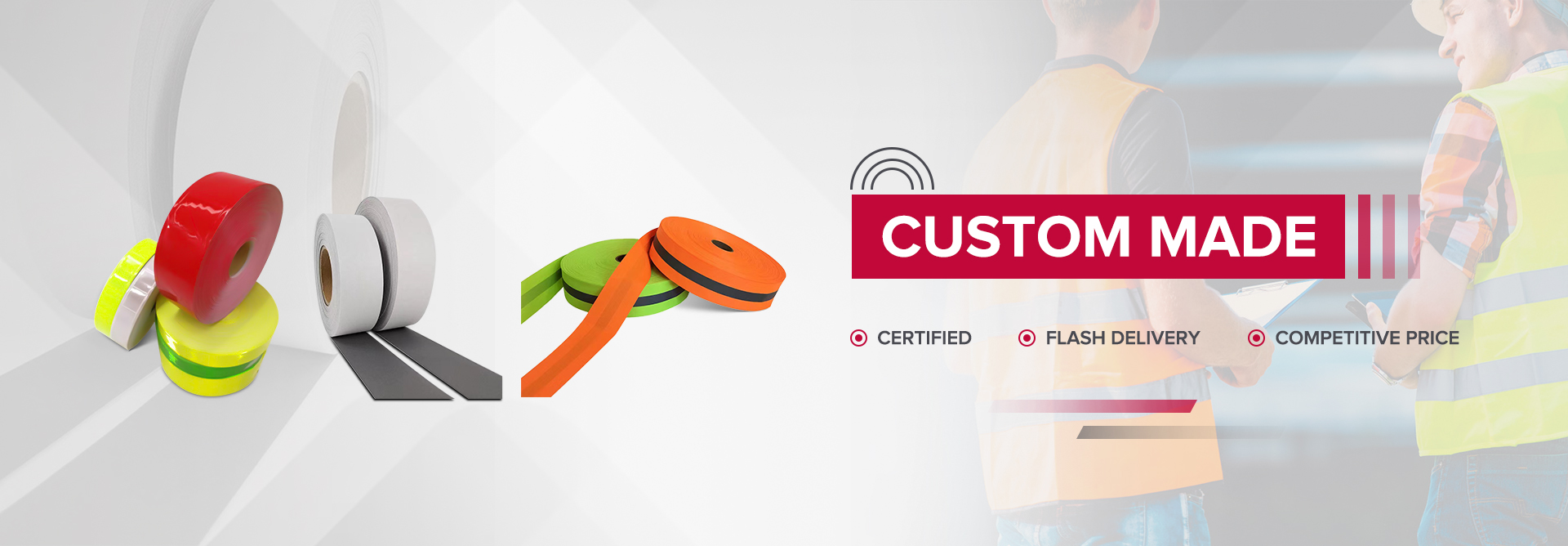Since there are a variety of different types of high visibility reflective tapes on the market, it is helpful to understand the characteristics of each option. You want to be sure the tape will work for your intended use.
Factors to Consider
The factors you will want to consider include:
Durability and longevity
Reflectivity and visibility
Weather and UV resistance
Adhesive strength and application surface
Durability and Longevity
Each tape has a different durability rating, dependent on the materials and adhesive it’s made from. Some tapes will last up to 10 years, but they could also be usable for as little as five years.
Reflectivity and Visibility
The main reason to choose this type of tape is for its reflective qualities, but not every product is equal. A tape’s candela rating will help you assess its reflectivity and visibility. Candela is the unit of measure for the brightness of the surface when reflecting light. Higher numbers mean the surface is more reflective and therefore more visible.
Weather and UV Resistance
If you are using the tape outdoors, you’ll need to know its ability to stand up to various weather conditions, including the beating it will take from the sun. Humidity is especially important to factor in since it can cause some tapes to shrink. You want to be sure your tape won’t fade in the sun or come off with too much moisture from rain or snow. Some tapes will require sealing to ensure the weather won’t interfere with its effectiveness.
Adhesive Strength and Application Surface
Ideally, you want to buy tape that has a high-tack permanent adhesive. But more important is you find one made for use on the specific surface on which you will apply it. Curved surfaces, for example, require specific tape designs, and some tapes won’t adhere to metal unless it has a painted surface.
Evaluating Tape Specifications
As you shop for reflective marking tape, it is important to understand how to evaluate the different factors of each product. You will need to consider:
Reflectivity standards
Compliance with safety regulations
Available sizes and colors
Installation and removal
Maintenance and cleaning
Reflectivity Standards
Reflectivity standards depend on the application. You may need something that will be highly reflective if you are using the tape as a safety tool. In other situations, such as tape for sports equipment, you may not need the highest grade of reflectivity.
Compliance with Safety Regulations
Sometimes, your use of reflective tape will have to follow legal regulations. Usually, this will apply to use on vehicles. The DOT has a range of rules for how to apply tape and which type of tape to use on trailers and other vehicles. It is essential to ensure you choose tape that meets these DOT requirements.
Available Sizes and Colors
One of the biggest variables when choosing tape will be the sizes and colors. Sizes are fairly dependent on the specific product you choose. Generally, you can get reflective tape as thin as 0.5 inches to as wide as 30 inches, but you may also find thinner or thicker options depending on the specific product.
Colors are more standardized since many applications have specific colors that you will want to use.
White: most common choice, highly reflective and bright
Yellow: popular choice, designates caution
Red: designates danger or stop
Orange: emergency color, designates caution or work zone
Blue: designates caution
Green: designates a safe zone or permission to enter
Black: not as reflective, blends in, mainly used for aesthetics
Beyond the standard color options, there are also some special choices. These include:
Flourescent: Flourescent reflective tape provides excellent visibility during the day and night. It is usually yellow or orange and is ideal for applications when visibility is imperative no matter the time of day.
Striped: Striped tapes are usually used for warnings. The common options are red and white to provide better visibility or orange and white to denote caution.
Installation and Removal Process
Pay careful attention to the installation and removal instructions for any product you purchase as many tapes have specific guidelines. You may have to apply tape at a certain temperature or ensure the application surface has no moisture. Tape may also require a certain amount of time to set before exposing to the weather.
Removal may vary, but the most common option is to use heat to help release the adhesive. Be sure to note if a tape will require a special chemical to remove as it could make it unusable in your situation.
Maintenance and Cleaning Requirements
Maintenance and cleaning are also important to factor in prior to purchase. You want to ensure the requirements match your abilities. Some tapes may require regular cleaning with a damp cloth while others may need only dusting. Cleaning is essential to keeping the reflectivity of the tape, so this is critical information to have.
Post time: Dec-26-2023



